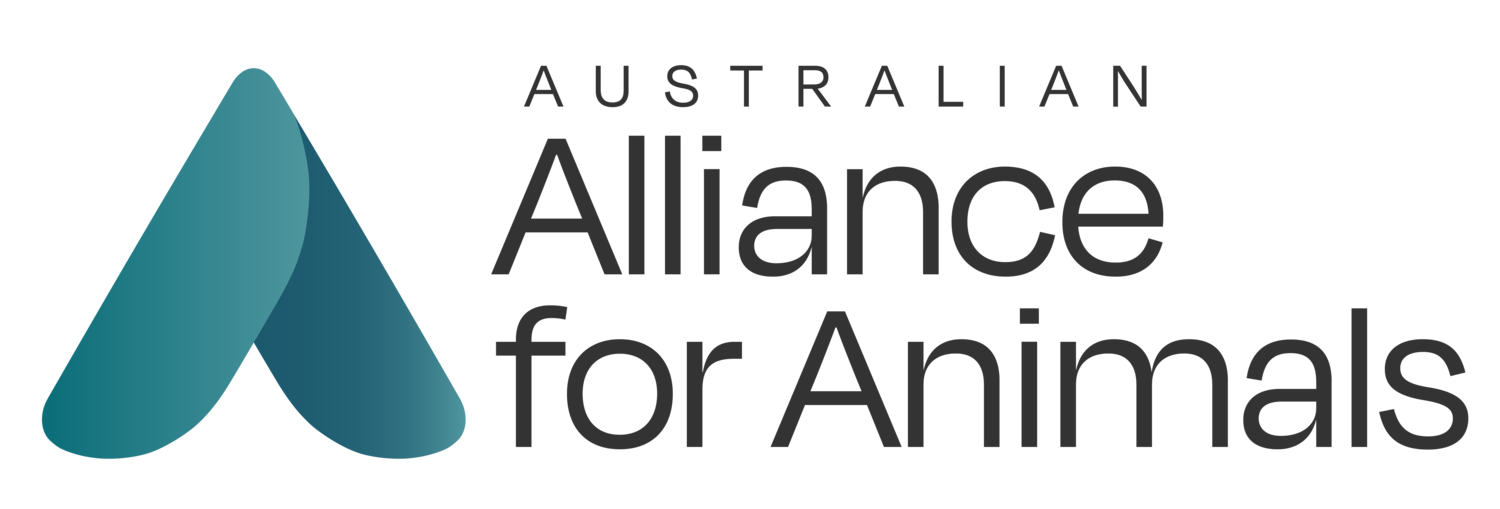Why does Australia need a National Animal Welfare Commission?
Every year in Australia, millions of animals suffer due to our outdated and broken animal welfare system. There is a lack of national leadership, conflicts of interest among those in power, undue influence from animal-based industries, and significant inconsistencies in levels of protection across states. For the hens who are still confined to battery cages, the lambs undergoing cruel live lamb cutting (mulesing), and the countless other animals subjected to painful and distressing practices, the need for reform is urgent.
Creating a National Animal Welfare Commission as an independent statutory agency will introduce a structured and consistent approach to animal welfare while giving animals the independent representation they need and deserve. A National Animal Welfare Commission is one of six vital reforms proposed by the #FairGoForAnimal campaign, designed to transform Australia’s animal welfare governance system.
Standards lack consistency across states and territories.
In Australia, state and territory governments are responsible for the regulation of animal welfare and its enforcement. The lack of national leadership means there is no consistent guidance on the outcomes that animal welfare standards must achieve nor direction as to how they should be implemented. As a result, some states and territories make standards mandatory laws, others implement them as voluntary guidelines, and some do not implement them at all. This lack of consistency leads to a patchwork of different regulations across the country and unequal levels of care and protection for animals.
Animal welfare standards are compromised by conflicts of interest and industry influence.
Animal welfare policy is currently delegated to the same government departments and ministers who are responsible for increasing productivity and profitability of livestock industries. This creates a conflict of interest between their objectives, and in most instances, industry interests will outweigh animal welfare concerns, leaving animals subject to cruel practices which do not meet community expectations or reflect contemporary animal welfare science.
Additionally, livestock industries have largely written their own standards, known as codes of practice. The codes of practice, in short, exempt certain species from the general duties of care outlined in each state or territory's respective Animal Welfare Acts. This has resulted in a two-tiered welfare system, where companion animals receive full legal protection, while commercially used animals, like chickens and greyhounds in racing, do not, despite their similar needs and sentience.
“In farming industries it is legal to cut the tails off piglets without any pain relief. If done to a dog or cat, these acts would be considered animal cruelty.”
Shatha Hamade | Legal Counsel, Animals Australia
Image: Farm Transparency Project
The lack of priority and glacial pace of change affects standards development.
Animals are left to suffer due to the extremely slow progress in reviewing and developing national animal welfare standards. In 2005, a review of the national model codes of practice for nine livestock species recommended a new series of animal welfare standards and guidelines. Since then, very little has changed. In some cases, it has taken ten years for new standards to go through the review, development, and implementation process. Often, by the time they are finally implemented, they are out of date. These delays are due to the lack of priority given to animal welfare policy by ministers and departments of agriculture.
Hens are still trapped inside battery cages because of this inefficient process. After taking eight years to review of the poultry standards, the egg industry was given until 2036 to phase out battery cages. Despite all state and territory Agriculture Ministers agreeing to the phase out, no states* have started the process of implementing a phase out in law.
*Note: the ACT banned battery cages in 2014.
Image: Animal Liberation
What would a National Animal Welfare Commission do?
A National Animal Welfare Commission would serve as an independent statutory body dedicated to animal welfare. This commission would provide national leadership and coordination creating to a more unified and consistent approach across all states and territories and providing animals with the representation they need and deserve.
Key benefits of a National Animal Welfare Commission include:
Provide national leadership to align state and territory governments on animal welfare and ensure consistent levels of care.
Oversee standards development and implementation processes for consistent implementation across all states and territories.
Increase transparency and accountability through public reporting on policy and decision-making processes
Undertake research and provide expert advice to inform policies and enhance public understanding of animal welfare issues.
How would the National Animal Welfare Commission be structured?
The National Animal Welfare Commission would be established through legislation, which would define its roles, functions, and independence. Once established, it would be led by commissioners skilled in animal welfare science, law, ethics, economics, and public policy. The Commission would report directly to a minister responsible for animal welfare and be safeguarded from political interference, ensuring decisions prioritise animal welfare, science, and community values without undue influence from industry interests.
Support the call for a National Animal Welfare Commission
Australia’s current approach to animal welfare fails to provide animals with fair and consistent protections. It is time for this to change and for animals to have independent representation in government. Establishing the National Animal Welfare Commission would represent a pivotal shift towards a more ethical, scientifically grounded, and community-aligned approach to animal welfare in Australia, setting a precedent for effective governance and enhanced public trust in animal welfare policies.




